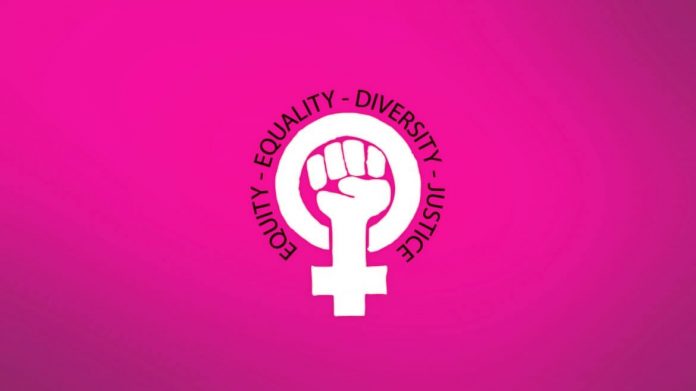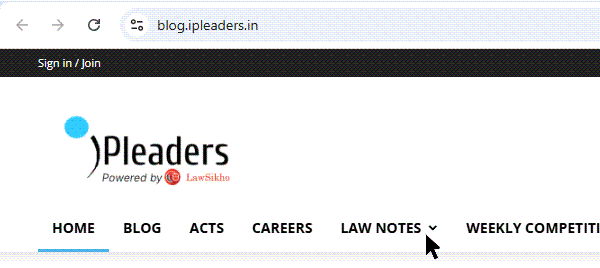This article, written by Nehal Misra and updated by Jaanvi Jolly, discusses insights related to feminism and pseudo-feminism. It deals with the various ways in which a few have modified feminism to make it anti-men. The changing Indian and global discourse is also discussed in this article.
Table of Contents
Introduction
“I do not wish women to have power over men; but over themselves.”
– Mary Shelley
‘Feminism,’ in simple terms, means that no individual of a particular sex should be treated with any injustice, and indubitably, they should receive equal treatment. However, lately, we can witness the emergence of a new version of feminism that is termed pseudo feminism. A pseudo feminist is a person who claims to be a feminist yet ignores the primary purpose of feminism, which is equality. The principle of pseudo-feminism supports the advancement of females ahead of other genders and the active targeting of males to right the wrongs of the past.
Pseudo-feminists have a deep desire to remedy all the injustices inflicted on women, often by lashing out and demeaning men. What they usually forget is that the fundamental essence of the movement towards feminism was equality. We frequently don’t realise it, but pseudo feminism is all around us, clandestinely hidden in the garb of feminism. While women are raising slogans demanding fair rights, they don’t waste a minute asking a man sitting on a lady’s reserved seat to vacate it.
Although they are in the minority, it is an apparent reality that some men are also victims of sexual crimes. The statistics of cases reported to the police are low as most people do not report such crimes for fear of being mocked, not believed, or facing counter charges instead. While minor boys are often kidnapped for illicit sexual activity and prostitution, grown-up men are abducted for forceful marriage or what is usually called ‘pakadwa vivah’. Therefore, the mere low frequency of such victims should not be a ground to dismiss the plight of men.
Before understanding how feminism was misunderstood and misused, we must pursue the development of the concept of feminism.
Evolution of feminism to pseudo feminism
“At the end of the day, don’t forget that you are a person, don’t forget you are a mother, don’t forget you are a wife, don’t forget you are a daughter.”
- Indra Nooyi, Former CEO, PepsiCo
Feminism is a range of sociopolitical movements and ideologies created to define and establish political, economic, personal, and social equality among men and women. The word feminism dates back to 1895. Back then, women fought for equal rights, equal pay, and equal shares in property, among other topics.
This highlights the notion that societies often prioritise the male perspective, resulting in the unfair treatment of women. To address this, efforts are focused on challenging gender stereotypes and promoting equal educational and professional opportunities for women. Feminist movements persist in advocating for various rights, such as the right to vote, hold public office, and receive equal pay for equal work. Additionally, feminists strive to protect women’s autonomy over their bodies and reproductive choices, including the right to access legal abortion.
Often, the historical changes in society are seen as, partly, a result of the feminist movements. The Western world, with the universal adult franchise, use of gender-neutral language, and introduction of women’s reproductive rights, has seen the most development on the count of feminist ideology. However, the recent striking down of the constitutional right to abortion, which was granted in the case of Jane Roe eal. Earl, Appellants vs. Henry Wade (1973), reflects the need for the continuance and relevance of the feminist movements.
Over the years, various feminist movements and ideologies have emerged, each representing different perspectives and goals. Some branches of feminism have faced criticism for primarily reflecting the experiences of white, middle-class, and college-educated individuals. This critique prompted the rise of ethnically specific and multicultural forms of feminism, such as black and intersectional feminism. These are discussed below in brief.
The first wave of feminism (late 19th to early 20th century) focused on various social and legal problems faced by women. It advocated for a change in traditional gender division and sought gender equality. Some of its demands included the right to vote for women and educational and professional opportunities.
The second wave of feminism (1960s to 1980s) sought to expand social, cultural, and economic rights. Some of their demands included equal pay for equal work, equal employment opportunities, and reproductive rights, which included access to conception and the right to abortion.
The third wave of feminism (1990s to early 2000s) focused on the diversity within feminist voices. Women belonging to various identities and facing multiple kinds of oppression were demanded. There was an observable rise in the use of media and social media for organizing grassroots feminism.
The fourth wave of feminism began in the year 2010 and continues at present. It is focused on capturing the digital space for feminist activism. With the change in the social makeup where women have started to come out and work, there is an increased focus on a safe environment and equitable economic rights, for instance, equal pay for equal work etc. One of the significant movements of this wave of feminism has been the “#Me Too” movement, which highlighted the prevalence of sexual violence and empowered the movement to raise its voice against such injustice.
However, in the present era, we have also seen the emergence of fake feminism, which describes the actions of people who seek to present themselves as feminist only in a superficial way. Nowadays, due to the feminist cause being highlighted a lot on social media, individuals attempt to show solidarity with the cause only to gain social media attention. For instance, following a # (hashtag) or changing the profile picture to support the cause with no real intention actually to adopt the feminist perspective. This is also seen in the corporate culture, where some companies adopt policies to showcase themselves as pro-feminist organisations for marketing purposes to seek support from the public. However, these are bereft of any meaningful changes or any contribution to the cause of gender equality.
Understanding the idea of pseudo feminists
The very basis of the foundational idea of the feminist movement is the demand for equality of treatment between genders. However, pseudo feminists believe that women deserve more respect than people of any other gender or orientation. Living in a culture and society where women often face a lot of challenges in daily life, the goal of equality of rights is hindered by the act and interpretation accorded to the term by the pseudo feminists. Anyone who only propagates or supports the rights of women above others and engages in male bashing whenever women face an atrocity or hardship is tagged as pseudo feminist or pseudo feminists. They do so without recognising the true meaning of being a feminist, which often hurts the cause of the feminist movement. On the social media scene, hardly any person knows what being a true feminist is about, and thereby the end of being a pseudo feminist by promoting a superior position for women.
Do pseudo-feminists want equal treatment? No, they want to create a world governed only by women. Will a woman be getting away with any wrongdoing? A specific set of women identifying as feminists want preference and superiority over equality.
Pseudofeminism is sometimes assigned to a branch of feminism with which some disagree. Many feminists incorrectly interpret the definition of feminism, taking the goal as not the upliftment of women but rather of pulling men down.
As they claim, a few rotten eggs ruin the pot, and people will sometimes use pseudo-feminist reasons to point out non-existent inconsistencies in the very idea of feminism. Supporting an idea and propagating it is one thing, but spreading hatred and discord meaninglessly in its name would only destroy all the good that was done before in the name of that idea.
Pseudo-feminists are also labelled on the Internet as “pseudo feminists” by keyboard warriors. They are individuals who do not entirely grasp the definition of feminism and who try to find signs of injustice and violence even though there are none. Pseudo-feminists have managed to mutilate the definition of feminism from what it is to a brand of man-hate, seeking any opportunity to seek vengeance rather than equality. While they are biased in promoting their cause, community, or sex, true feminists seek equality rather than superiority.
The major challenge faced by feminism in the present era is not the backlash or opposition faced or the existing difference of opinion within the stream; instead, it is the emergence of a group of pseudo or fake feminists. The basic ideology behind pseudo feminists is that they support the advancement of females ahead of the other genders, which, in other words, ends up actively targeting the males to correct the wrongs committed by them upon the females in the past. This idea often leads to the act of male bashing and moves away from the original feminist concept of gender equality. These pseudo feminists do not believe in the idea of gender equality. Instead, they wish to put the concerns and the rights of the females above the males and all the other genders.
Test of distinguishing between a feminist and a pseudo feminist
Some test has to be articulated to differentiate between a feminist and pseudo feminist
- The pseudo feminist sees everything through a gendered lens; they see sexism prevalent in every sphere in our country. They refuse to see the complexities in the culture and human diversity. They suspect a conspiracy to put women in their place is ever working. They refuse to appreciate or celebrate the achievements attained in various fields by women but rather point out minute, irrelevant issues.
- They refuse to accept that any inherent differences exist between males and females. The biological, psychological, and sociological differences are all ignored. Differentiation and individuality are not accepted by pseudo feminism. Their idea of equality is guided by the principle of sameness only, which means absolute disregard for any difference between the sexes.
- They detest any help from the opposite gender. Their idea of asserting independence lies in individuality and fulfilling their self-serving narratives. They need to realise that independence lies in showing gratitude and humility, not in being stubborn. They also try to impose their standards or expectations on others.
- They have a sense of superiority and a biased and prejudiced view. They believe that women are superior to men. They refuse to recognise and respect the rights of men and instead demean their rights.
- They are hypocritical in their approach and use sexism as a weapon when beneficial to them. They do not believe in the principles of feminism but only use sexism as a weapon. They twist the principles to manipulate them as per their own needs. They refuse to be held accountable for their choices rather than blame society instead for all their issues.
Difference between misandry, feminism, and pseudo feminism
Feminism advocates women’s rights on the grounds of equality of the sexes. Misandry is the dislike of, contempt for, or ingrained prejudice against men (i.e., the male sex). The word misandry means hatred for men. The underlying principle is violence. Misandry is the hatred or disdain for men, which is distinct from feminism. Misandry can sometimes be mistaken for feminist critiques, primarily when those critiques are directed at patriarchal structures that benefit men as a group.
Genuine feminism does not advocate for the belittling or discrimination against men. Instead, it aims to challenge how gender norms and stereotypes limit the potential and well-being of all individuals, including men. Pseudo feminism propagates that women deserve more respect or that people of other genders deserve no respect. So, pseudo-feminism can sometimes inadvertently promote misandry if it involves adopting extreme or exclusionary views under the guise of feminism. For example, a pseudo-feminist group that targets men with hostility rather than addressing systemic issues could contribute to misunderstandings about feminism.
Feminism vs. Pseudo feminism
A feminist might be a man, woman, or anyone who believes that sex should not determine the scope of a person’s rights. It is a concept that strives for gender equality, it seeks to ensure that women are given the same education and the same employment opportunities. It aims at eliminating the stereotyping of the gender role division, which is disadvantageous to females. Women should not be forced to leave school early and marry, do housework, or fit in more traditional roles. I think a lot of us are feminists without even realising that. The various types of feminism prominent in today’s world are:
Egalitarian feminism vs. Pseudo feminism
Egalitarian feminism
Emphasises equal rights and opportunities for all genders. It advocates for dismantling societal structures perpetuating inequality, focusing on women’s and men’s issues. This approach seeks to create a fair society where everyone, regardless of gender, has the same opportunities and rights.
Pseudo feminism
On the other hand, may appear to support women’s rights but often prioritises the interests of a specific group typically white, middle-class women while ignoring broader issues of inequality that affect marginalised women. It can involve adopting feminist rhetoric without a genuine commitment to addressing systemic oppression or advocating for true equality.
Therefore, we can see that while egalitarian feminism aims for comprehensive equality for all, pseudo-feminism often fails to address the complexities of gender inequality, focusing instead on limited or self-serving goals.
Quasi feminism vs. Pseudo feminism
Quasi feminism
Another string of feminist ideology is quasi-feminism. This group consists of individuals who believe in the equal treatment of men and women in most spheres, except a few. So, this group adopts feminist ideas in a few spheres but refuses to advocate for them in others. This is also called partial or superficial feminism.
Pseudo feminism
A pseudo feminist woman will consider men inferior to her, however. However, feminists will not. A quasi-feminist will agree that men are physiologically built to be more assertive than women, that women and men both are superior in their respective spheres and that, notwithstanding their differences, they are still humans. While it is the duty of every man and woman, feminist or not, to advocate for the rights of women, it is also necessary to ensure that men do not become the receiving end of the immense backlash faced due to the erroneous actions of their ancestors.
Feminism is simply about freedom and is not about judgment. People who recognise feminism don’t wear the feminist badge. These people want a good education for their daughter and support from their companion if she decides to work. True feminism acknowledges the rights of individuals to make their own choices. So if some women wish to follow the path of homemakers and take more care of their house and children than work, that choice is equally accepted and appreciated.
Rise of pseudo feminist culture in India
Misuse of protective legislation by women
Srimati Basu, in her article titled ‘Looking through misogyny: Indian men’s rights activist, law, and challenges for feminism, ’ discovered that the protectionist laws dealing with domestic violence, cruelty, etc., are serving as tools to harass males. Further, it has been increasingly acknowledged by the media and the courts that the laws that were brought in to protect females are often being used to harass their male counterparts. Provisions for maintenance and alimony are usually seen as biased toward women. Further, in most of the divorce and allied cases, one is likely to find domestic violence petitions being filed; in a majority of the cases, the latter are employed as tools to negotiate alimony and residence arrangements. Men’s rights groups argue that feminists have unduly influenced legal reforms, resulting in the unfair targeting of men and exploitation through divorce and domestic violence laws. They advocate for fair treatment in legal proceedings and gender neutrality in custody and maintenance decisions. If true feminism were upheld, all victims would be treated equally, regardless of gender. They would be recognised simply as victims of abuse, not categorised as male or female. Unfortunately, this is not the reality. Indian Family Courts and Indian Criminal Courts show an unethical and immoral bias towards women while delivering justice. Laws are abused to favour women.
Misuse of Sections 85 and 86 of the Bharatiya Nyaya Sanhita, 2023 (Section 498A Indian Penal Code, 1860)
In the 1980s, we saw laws that addressed domestic violence, including Section 498A of the IPC, which targets cruelty in marital homes and allows for police arrest with a punishment of up to 3 years. Cruelty covered under the sections is not merely mental or physical harm but also includes economic and emotional abuse. Further, the Dowry Prohibition Act, 1961, was amended to place a reverse burden of proof on the accused of dowry offences. However, there are no penalties for those who file false or exaggerated complaints.
Currently, cruelty cases often involve dowry demands with some lawyers and police officers, encouraging such claims to harass the husband. This misuse of the 498A can lead to extortion by the bride’s family. While some claims may be genuine, women sometimes overstate demands for maintenance as a negotiation tactic in divorce, leading to blackmail.
A Delhi-based organisation named Shakti Shalini had examined various cases where the protective provisions were misused. In one instance, a woman threatened her wealthy marital family to fund her business or face legal complaints, another sought divorce claiming cruelty from her husband while secretly being pregnant by another man, in a separate case, a woman and her father falsely accused her husband under section 498A of the IPC and demanded 10 lakhs for a mutual consent divorce.
The case of Arnesh Kumar vs. State of Bihar (2014) is frequently referenced in discussions about the misuse of Sections 85 and 86 of the Bharatiya Nyaya Sanhita 2023 (498A of the Indian Penal Code 1860). The section addresses cruelty against married women and highlights concerns about arrest without adequate investigation or evidence. The Supreme Court ruled that arrest should only occur after a thorough investigation and proper justification. The court established guidelines to differentiate genuine cases from falls or exaggerated claims, aiming to prevent misuse of the provision.
- If an FIR under Section 498A of the IPC is registered, the police officers have to satisfy themselves about the necessity of arrest as per the parameters laid down under Section 35 of the Bhartiya Nagrik Suraksha Sanhita, 2023 (Section 41 of the Code of Criminal Procedure, 1973).
- All police officers must be provided with a checklist containing specific sub-clauses given under Section 35 of the Bhartiya Nagrik Suraksha Sanhita, 2023 (Section 41(1)(b) of the Code of Criminal Procedure, 1973).
- The police officer shall forward the checklist duly filled and furnished with reasons and material he had to justify the arrest to the magistrate.
- The notice of appearance, in terms of Section 35 of the Bhartiya Nagrik Suraksha Sanhita 2023 (Section 41A Code of Criminal Procedure, 1973), must be served on the accused within two weeks from the date the case was instituted.
- Failure to comply with the directions would make the police officer liable not only for departmental election but also for contempt of court.
Demands for an unnecessary amount of maintenance
Under Section 144 of the Bharatiya Nagrik Suraksha Sanhita, 2023 (Section 125 of the Criminal Procedure Code, 1973), the maintenance provision was directed toward the husband, who provided maintenance to his wife, not the other way around. In the present times, whenever a divorce is filed, the question of the quantum of alimony or maintenance for the wife becomes the central question.
The main provisions provided a socially beneficial objective of not letting the female into a life of restitution or vagrancy. This objective will lose its foundation wherein females have fabricated false records to present themselves as unemployed or earning less than they are to get the maximum alimony possible. Often, the threat of domestic violence cases is used as a sword by the wise to improve their bargaining position in the discussion on alimony.
This selfish and greedy behaviour by the females goes against the very principles of feminism, which claim equality. This amounts to misuse of the socially beneficial legislation, which was enacted to protect females. This is not something that the true leaders of the feminist ideology would ever support. This is a prime example of what pseudo feminist would support.
Anomaly in the Prohibition of Child Marriage Act (2005)
The Prohibition of Child Marriage Act, 2005, was introduced to fight the menace of child marriage. It was made to protect the interests of children, both males up to the age of 21 and females up to the age of 18. One anomaly that can be found is if a boy aged 18 marries a girl aged 17, even though the boy himself falls under the definition of ‘child’, he would be held guilty of the act. On the other hand, the female cannot be held liable under the Act if the girl is aged 19 and marries a 15-year-old boy. This is evident in the following provisions. While Section 2(a) of the Prohibition of Child Marriage Act defines a male as a child if he has not completed twenty-one years of age, Section 9 provides punishment to a male above 18 years for contracting a child marriage.
False sexual assault cases
Women have been disadvantaged since time immemorial. Various discriminatory acts have been committed against them, which led to the parliament legislating numerous protective and reformative legislation to protect their interests. However, in recent times, it has been observed that females have misused these protective measures to blackmail or harass their spouses and in-laws. Some of the instances where the courts acknowledged this reality are mentioned below.
In the case of Neena Shad vs. Municipal Corporation of Delhi (2010), the Delhi High Court stated that the petitioner, Neena Shad, was a nuisance at her workplace and was in the habit of accusing people of false charges of sexual harassment against her colleagues as well as her seniors. As many as three complaints regarding sexual harassment allegations were filed by Neena Shad, but not even an iota of truth was found in any of the said complaints by the Committee. Due to her reputation, no male employee was ready to work under her lest she would level sexual harassment allegations against him.
Misuse of the Prevention of Sexual Harassment of Workplace Act (2013)
In the case of the Union of India vs. Rema Srinivasan Iyengar (2019), the respondent, an Assistant Registrar of Trademarks in Chennai, filed complaints against the Deputy Registrar for alleged high-handedness and arrogant behaviour. Initially, her complaint was general, focusing on the petitioner’s authoritative conduct. However, her subsequent complaint included repeated mentions of “sexual harassment” and described physical advances and lewd remarks, which were not mentioned in her original complaint.
The Hon’ble High Court of Madras observed that every office has decorum and order to maintain. Therefore, women employees cannot be granted any laxity based on gender. The manager has a right to get work done by them, and if a woman employee is discriminated against due to her inefficiency or for any other official reasons, the recourse for her is not the one taken by this complainant. Though the Prevention of Sexual Harassment of Women at Workplace Act (POSH), 2013, was created to provide women equal standing in the workplace and to create a welcoming environment where their dignity and self-esteem are protected, it cannot be allowed to be abused by women to harass someone with exaggerated or non-existent allegations. Here, the court concluded that the complainant, it appears, made a futile attempt to settle her score with the petitioner.
The Act has been misused in the following ways:
Filing of false accusations
In the corporate sector, the trend of filing malicious complaints has emerged. False complaints can be filed for different reasons, including settling personal scores, achieving a better bargaining position at work, or damaging the reputation.
To seek revenge
Employees often file false complaints against their seniors for any action taken against them at the workplace.
To extort money
These false complaints are also filed to extort money from employers.
To manipulate the process or decisions at work
This protective Act is often used as a weapon against their male colleagues or seniors in order to seek promotions or better opportunities.
The rise of false or malicious complaints is a very worrying situation, as it will destroy the actual objective of the POSH Act and also create a more unsafe environment for the male employees of a firm. This Act has been criticised for being a gender-biased Act that is destroying the lives of innocent male employees.
In the case of the Union of India vs. Rema Srinivasan Iyengar (2019), the Assistant Registrar of the Trademarks in Chennai filed a complaint against the Deputy Registrar. The complaint initially cited his authoritative behaviour as a threat to her self-respect. However, in a subsequent complaint, she repeatedly used the terms sexual harassment, physical advance, and lewd remarks, although her original complete did not mention these terms. The Madras High Court noted that workplace decorum must be maintained and that management can direct the employees. The manager has a right to get work done by the employees. If a woman employee is discriminated against due to inefficiency or other official reasons, the recourse for her is not the one taken by the complainant. The court emphasised that the Prevention of Sexual Harassment of Women at Workplace Act (POSH), 2013, while aimed at protecting women’s dignity, should not be misused for personal grievances. The Court concluded that the complainant was attempting to settle a personal score rather than addressing genuine harassment.
The Act has been misused in the following ways:
Filing of false accusations
In the corporate sector, the trend of filing malicious complaints has emerged. False complaints can be filed for different causes, including to settle personal scores, achieve a better bargaining position at work, or damage the reputation.
To seek revenge
Employees often file false complaints against their seniors for any action taken against them at the workplace.
To extort money
These false complaints are also filed to extort money from employers.
To manipulate the process or decisions at work
This protective Act is often used as a weapon against their male colleagues or seniors in order to seek promotions or better opportunities.
The rise of false or malicious complaints is a very worrying situation, as it will destroy the actual objective of the POSH Act and also create a more unsafe environment for the male employees of a firm. This Act has been criticised for being gender-biased Act that is destroying the lives of innocent male employees.
False domestic violence cases
In the case of Hiralal P. Harsora and others vs. Kusum Narottamdas Harsora and others (2016), the Apex Court observed that “violence knows no gender”. The court discussed that the object of the Act was to protect women from domestic violence. The definition of respondent under Section 2(s) of the Protection of Women from Domestic Violence Act, 2005 mentioned only ‘adult male member’ against whom a complaint can be filed under the Act, is a ‘classification not based on any intelligible differentia’, and does not have any rational relationship with the object sought to be achieved by the Act. The said expression goes contrary to the object of the Act, which is to afford the most significant possible protection to women from domestic violence by any person, male or female, who happens to share either a domestic relationship or shared household with the said woman.
In another case of Social Action Forum for Manav Adhikar vs. Union of India Ministry of Law and Justice and others (2018) the Supreme Court acknowledged the misuse of Section 498A and observed that it was being used as a weapon for harassment in many instances. The court directed the police to follow the guidelines issued in the aforementioned Bhajan Lal case to prevent arbitrary arrests in cruelty cases.
Independent Thought vs. Union of India (2017) This case focused on the misuse of the Protection of Children from Sexual Offences (POCSO) Act (2012). The Supreme Court held that consensual sexual relationships between minors, where both parties were close in age, should not be treated as criminal offences under the Act. However, this was a mere opinion of the court and was not a part of the ratio of the judgment.
Achin Gupta vs. State of Haryana (2024), the Apex Court quashed the FIR, alleging cruelty by observing that the police machinery should be used as the last resort and in very genuine cases of cruelty and harassment. The police machinery should not be used to harass the husband by presenting the threat of arrest.
In this case, the husband stated that he had filed a divorce petition along with a domestic violence case against his wife. After the service of the summons to the wife in the domestic violence case filed by the husband, as a retaliation, an FIR was filed by the wife alleging cruelty. Thereby, the FIR was filed with malice and vengeance towards him.
The court concluded that the wife’s allegations were vague and general. They did not specify instances of criminal conduct or disclose any specific date or time of the alleged offence. Therefore, the court considered that the FIR was an abuse of the court’s process and thereby had to be quashed.
Criticism of Pseudo feminism
When pro-women becomes anti-men
In 2019, “A Cross-Sectional Study of Gender-Based Violence against Men in the Rural Area of Haryana, India” was conducted by Jagbir Singh Malik and Anuradha Nadda. Their objective was to find the prevalence, characteristics, and sociodemographic correlates of gender-based violence against men. For the study, 1000 married men in the age group of 21–49 years were interviewed. The study showed that about 52.4% of men experienced gender-based violence. Out of 1000, 51.5% experienced violence at the hands of their wives/intimate partner at least once in their lifetime, and 10.5% in the last 12 months. The most common spousal violence was emotional (51.6%), followed by physical violence (6%). Only in one-tenth of cases, physical assaults are severe. Unemployment of the husband at the time of violence was the primary reason (60.1%) for violence.
In another research paper by Dr. Navpreet Kaur and Dr. Shobha Gulati, titled ‘Domestic violence against men in India: A Critical analysis with special reference to Indian laws’. They discuss a list of reasons for domestic violence against men. These included the following: Lack of reporting, lack of legal protection, prevalent stereotypes and gender biases, lack of support mechanisms, and lack of awareness and sensitisation.
Failure to acknowledge the harm done to men
Pseudo feminists often ignore or downplay critical issues like violence against men, mental health, and other forms of discrimination, thus failing to create a genuinely inclusive dialogue about gender equality.
When discussing the increasing violence against women, it’s essential not to overlook the fact that men also experience brutality in society. The cases are often registered under Sections 137, 139, 140, and 143 of the Bharatiya Nyaya Sanhita, 2023 (Sections 363 to 369, 371 to 373 Indian Penal Code, 1860 [IPC) ). Such cases are not addressed with the same attention as abuses against women, even under existing regulations. There has yet to be a comprehensive study on this issue. Typically, society rallies to support female victims, but this level of support is often absent when the victim is male. True feminism should advocate for equal treatment of all victims, regardless of gender; victims should be recognized simply as individuals who have experienced abuse.
Due to these concerns, many societies have emerged, like the Society for Prevention of Cruelty to Men in Delhi, the Child Rights Initiative for Shared Parenting in Bengaluru, and Purush Hakka Sanrakshan Samiti Organisation to Conserve Men’s Rights in Nasik. These voice the concerns of persecuted victim husbands and children without custodial fathers demanding the right to gender equity.
Diluting the meaning of feminism and promoting misogyny
Feminism was intended to be a revolutionary and reformative ideology that advocated gender parity. However, pseudo-feminists often forget the ideology’s true aim and engage in activities that harm the actual cause of promoting equality. Pseudo-feminism usually creates a divisive narrative that pits genders against each other, fostering animosity rather than encouraging collaboration for equality. Further, focusing exclusively on the struggles of confident women can perpetuate negative stereotypes about men, portraying them as oppressors rather than individuals capable of allyship.
Creating fear due to false accusations
Feminism advocates equality of rights and freedom for both men and women, it does not seek to place women above men. It entails a collaborative environment where the advancement of a person has no relation to a person’s gender. However, the pseudo feminist ideology puts the concerns of women before those of men. The misuse of protectionist laws to fulfil their narrow motives irrespective of what harm those cause to the males creates an antagonistic environment rather than one of collaboration. A feminist could be a male or a female; if a person believes in equal rights and freedoms for both genders, he or she is a feminist. However, a pseudo feminist idea of superiority pits the interest of men against females, which may result in discouraging men from speaking out against genuine issues or advocating for women’s rights due to the fear of being falsely accused or misunderstood, which can hinder constructive dialogue. This would also affect the cause of genuine victims, who would be seen with the gaze of suspicion.
The focus of Indian men’s rights movement focuses on the issue of a legal burden on the males being maliciously charged in criminal cases for domestic violence, cruelty, etc, wherever civil cases for divorce and maintenance are filed. Allegations of harassment and extortion by the police, lawyers, and the wives. This is often coupled with the loss of reputation and job.
Change in international discourse
We are now living in a time of post-feminism. It is a period in which women have successfully reaped the benefits of achieving the goals of first and second-wave feminism. This phrase is critical of the goals sought to be achieved by the fourth wave, which is accused of threatening human society and becoming an existential threat to the world.
Celebrities and writers such as Camille Paglia, Christina Hoff Sommers, Jean Bethke Elshtain, Elizabeth Fox-Genovese, Lisa Lucile Owens, and Daphne Patai oppose some forms of feminism, though they identify as feminists. They argue, for example, that feminism often promotes misandry and the elevation of women’s interests above men’s and criticises radical feminist positions as harmful to both men and women.
The emergence of fake feminism started in 1996. The various actors behind the emergence are politicians, anti-national elements, left ideologists, etc. Often, the freebie culture offered to women by the state is criticised for promoting gender disparity that disadvantages males. Free bus travel, separate metro coaches, and similar measures have been criticised as undermining the core principles of feminism.
In May 2014, a workshop was organized at British Columbia University in Vancouver titled ‘Men’s Groups: Challenging feminism. It aimed to address the resistance to various men’s rights. They claimed that males are being discriminated against in laws dealing with family and violence against women, education, etc. The workshop sought to address the lessons which the feminist discourse about the legitimacy of men’s groups.
In the case of John C. Depp vs. Amber Laura Heard (2019), Amber Heard was convicted of defamation by putting forward the allegation that Depp was an abuser. The defamation trial was sensationalised worldwide. This case started the discussion on the topic of domestic violence where men are victims. Feminism was under attack during the trial as it was pointed out that Amber Heard blindly believed in her op-ed about the alleged domestic violence she faced from Johnny Depp.
As a result, Depp lost a $22.5 million deal for his role in Pirates of the Caribbean, suffering a severe blow to his reputation. Amber Heard was also recorded taunting Johnny Depp by saying, ‘See how many people believe or side with you when you are a hunk claiming to be abused by a woman. The fact that no one even cared to hear the other side of the story before believing the accusations was criticised as a misuse of the feminist discourse.
Jessa Crispin in the article titled ‘Amber Heard’s toxic femininity- For men’s rights activists, she’s the embodiment of women who lie’ discussed how the trial in the case between Amber Heard and Johnny Depp was a conflict between the feminists and male rights activists, rather than about the truth of what happened. We need to acknowledge that what the men oppose is not the right of the females. Instead, it is the aspect of females resorting to pseudo feminist tactics like playing the victim card and the act of manipulation of public opinion.
These acts are not only depreciated by the male rights group but also by the actual feminist voices. There must be an acknowledgement that wrongdoing can be from either gender and the wrongful acts of a person, whether it’s a male or a female, must be called out by both the male rights groups as well as the feminists. There is a need to dismantle the view that the male is always the perpetrator and the female is always the victim. We need to judge the acts of the people in terms of right and wrong and not in terms of the gender dichotomy.
Christine Odone, Head of the Family Policy Unit at the Centre for Social Justice and a journalist editor at The Telegraph, The Statesman, etc. In her article for “The Spectator”, she discusses the reality of male domestic abuse victims and how they are often mocked and not believed.
Even in India, in a lot of households, the males are victims of violence and abuse by their partners, and what is worse is that their ordeal is not treated with the same seriousness or empathy by the justice machinery or the medical professionals. This is primarily due to the gender notion of the perpetrator-victim dichotomy that exists in the psyche of the people. Men bear the unequal burden of always being seen as the abusers, and the possibility of them being the victims is dismissed without discussion. This is, in a way, reflective of the fact of how the male patriarchy is often detrimental even to the males.
The stigma attached to being a male victim of domestic violence causes only a fraction of men to come forward and admit to being abused by the woman. This changing discourse is being recognised in the international sphere.
Need for feminism in 2024
In the case of In re: Alleged rape and murder incident of a trainee doctor in R.G. KAR medical college and hospital, Kolkata and related issues, the Badlapur sexual assault wherein two girls aged about four years were sexually assaulted in the washroom of the school by a male attendant and the astonishing report of the Hema Committee about the harassment at the workplace faced by females in the Malayalam film industry, all these point towards the finding that the dream of equal rights and a safe environment for women in the world remain unfulfilled. Yes, there have been developments, increased participation in the workforce, females occupying positions of power in big businesses, and increased educational opportunities for females. Despite these achievements, the feminist ideology has a very important place even in 2024.
Conclusion
“That’s what twenty-first-century feminism is about, the idea that when everybody is equal, we are all more free.”
Barack Obama, former US President
Women, in the name of feminism, have started to use it to their advantage to pull down other genders (men primarily, and also other women who prefer equality for all). There has been an increased discussion on how the laws that were intended to protect females are now being used to attack males. The increased discussion on the aspect of false rape cases being filed only to seek her revenge for framing the males. We need to understand that the rise of pseudo feminism is hurting not only male rights but also the rights of females. In light of the constitutional ideal of equality, the collective goal of the male rights groups or the feminists must be to have an equal society without discrimination and preference based on a person’s gender.
Frequently Asked Questions (FAQ’s)
What does ‘pinkwashing’ mean?
Pinkwashing refers to a variety of marketing and political strategies aimed at promoting products, countries, people, or entities to LGBTQ people or using LGBTQ-related labels to be perceived as progressive, modern, or tolerant. It is derived from the word ‘whitewashing,’ defined as an attempt to conceal or dilute unpleasant facts, such as crimes and vices. In the 1980s, the pink ribbon logo became the face of marketing campaigns by companies to show their support for breast cancer survivors, victims, and charities.
In the year 2002, the term ‘pinkwashing’ was used to call out and condemn the foundations and corporations that were using the awareness campaign as a way to increase their profits by using pink coloured products.
References
 Serato DJ Crack 2025Serato DJ PRO Crack
Serato DJ Crack 2025Serato DJ PRO Crack










 Allow notifications
Allow notifications



